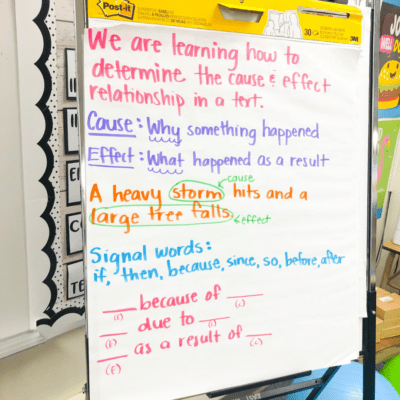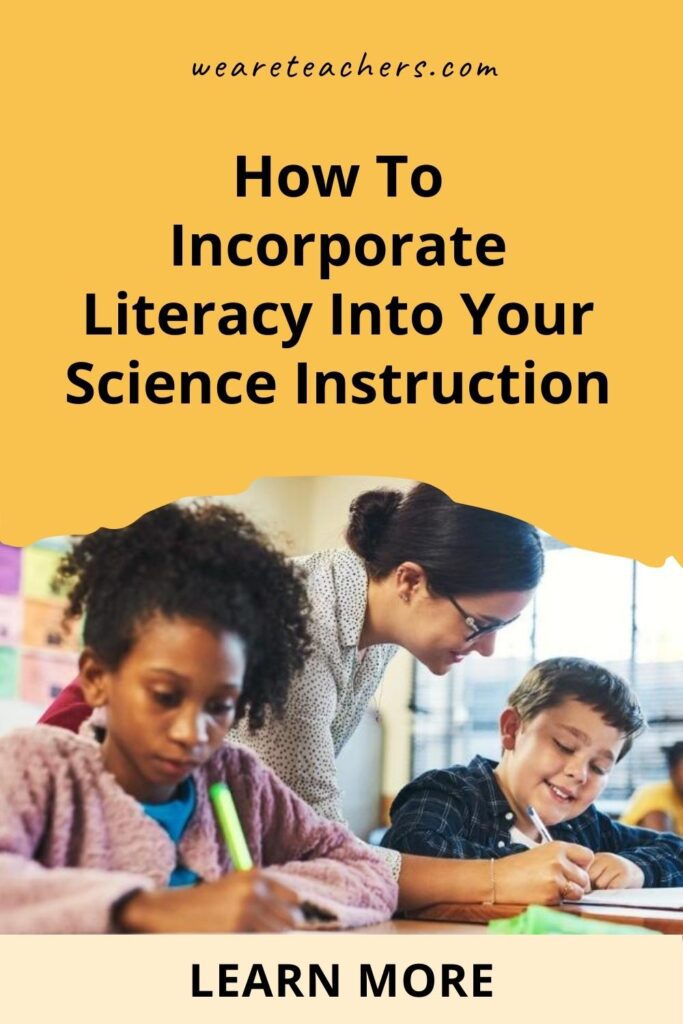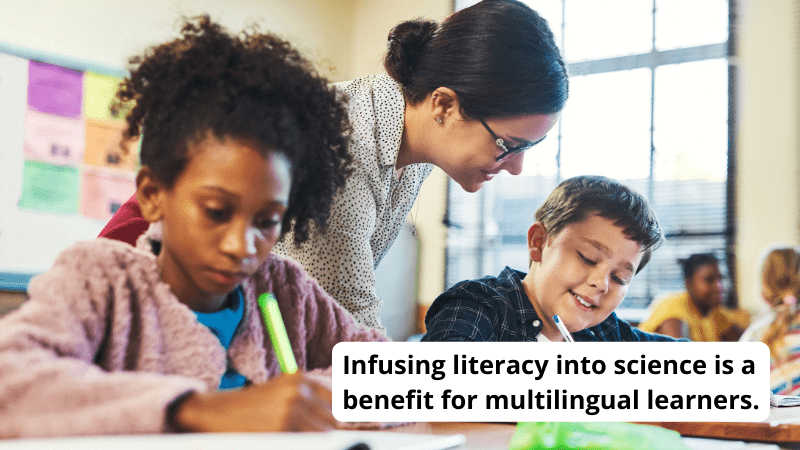It was the spring before state testing and my fifth graders had been learning about the ways communities use science ideas to protect the Earth’s resources. Students needed to write an informational piece to explain their research and findings. I had Spanish-speaking students who had just moved to our community and were learning English. We worked together, with our two languages, to find information and put it into a fifth-grade-level informational writing response. Throughout our whole unit, we used hands-on science materials, language frames, partner discussions, partner reading, and explicit vocabulary instruction to support their English acquisition. Although these two students became frustrated at times, they were motivated to continue because of the support they had to help them access the science content.
What I saw firsthand as a teacher has also played out in formal research. A recent study from Texas A&M University followed a cohort of fifth-grade students’ science achievement over five years and found the same results. Project Literacy-Infused Science Using Technology Opportunities, also known as Project LISTO, aimed to improve students’ science and reading/writing literacy achievement by working with teachers and administrators to build instructional capacity. Teachers used explicit vocabulary instruction, strategic partner reading, and standards-aligned science curriculum. Students and their families even had the opportunity to connect with university science majors to talk about related careers in science.
The kids have already been taught reading strategies. But to connect it to a science concept, it kind of made them make that connection that, oh, it’s not just my reading class. It also incorporates into my science class. So I think it helped kids become more well-rounded.” —Sixth-grade teacher Laura Cerda on Project LISTO
Their findings proved that adding literacy to science instruction helps students’ academic achievement in both reading and science. Here are a few of the emerging themes from the study:
- Adding literacy strategies in science instruction increases student engagement.
- Academic and science vocabulary knowledge increases when you add literacy to science instruction.
- Students feel more confident in reading in science.
So, how can you incorporate literacy into your science instruction? Check out these recommendations based on the LISTO study findings.
Use reading strategies.
An effective yet easy way to incorporate literacy into your science instruction is by using pre-/during/after reading strategies while you’re teaching. One pre-reading strategy you can use with students is highlighting the text features of a reading passage. You can tell students what they’ll notice about the passage, like boldface terms or bulleted statements. This is an opportunity to tell your students that when they see these text features, they should highlight them for reference because they’re important terms.
Support students’ thinking by using language frames.

Cause and effect, compare and contrast, and making claims—these academic vocabulary terms are used throughout science instruction. Also known as language frames, phrases like “cause and effect” and “compare and contrast” are essential in helping students communicate their scientific thinking. Giving students opportunities to practice using these phrases in science is another way to infuse literacy into your science instruction.
Laura Cerda, a sixth-grade teacher in Texas’ Donna Independent School District, shared how using language frames helped her students: “Using sentence stems allows us to focus on important information rather than just waiting for students to finish writing this whole sentence. Plus, it helps them with building their sentences.”
Be intentional about science vocabulary instruction.
Take the time to explicitly teach science vocabulary. It’s more than just drawing a picture that defines a word. Project LISTO’s curriculum for explicitly teaching vocabulary includes using syllabication—dividing words into syllables—when introducing the word and making sure you use student-friendly definitions. Give students the part of speech and use realistic color images to show students real-life examples. Practicing the word in context by giving a question prompt also supports students with learning how to use the word in a sentence on their own.
Incorporate cooperative questioning into your lesson.
The cooperative question model is a great way to get your students speaking and listening during whole-group discussions, and it also makes completing the science tasks a lot more fun! It’s easy to incorporate too. The teacher asks the students a question. All of the students use some wait time to think about their answers. Then they take a few minutes to discuss the question with a partner. After students have had a chance to discuss the question, they can now share their responses with the class.
Have students present information to the class.
After students have learned specific science skills or ideas, have them put that information together and create a presentation they can share with their classmates. This will get students speaking in front of others, and it will also help your whole class with listening skills. Have students who are listening write down three questions they have for the speaker. Then have the speaker answer a few of those questions to end their presentation.
Create anchor charts.

Create anchor charts as you teach science lessons, and use them to gather students’ ideas about the science topic they’re learning about. When you’re leading a collaborative discussion with your class, you can write students’ ideas and questions on the anchor chart while also including important academic and science vocabulary terms. The anchor chart can be something you come back to throughout your unit as your students gain more knowledge on the topic.


